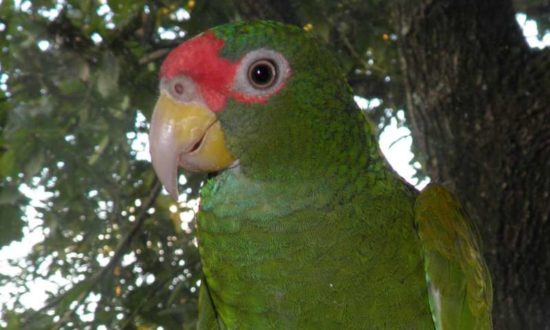Traci Watson writes in National Geographic that for decades, countless bird lovers have scoured the Yucatán Peninsula on a quest for rare species. Now it appears they all missed one—and a bright and noisy one at that.
That makes it an oddity: New parrot species named in recent years tend to be subspecies later promoted to full species status, often as a result of DNA tests.
”This is, without a doubt, proof that we still live in a time of ornithological discoveries,” says Miguel Gómez Garza, of the Autonomous University of Nueva León, the first to glimpse the new parrot in 2014. “We just have to keep … our eyes wide open.”
But other experts are doubtful that the blue-winged is a new addition to the flock.
A STRANGE CRY IN THE FOREST
Garza, a veterinarian who cares for wildlife confiscated by Mexican authorities, was exploring the Yucatán’s forests when he heard an unusual bird call. The source was a group of parrots, about the size of city pigeons, their striking blue wing feathers and flaming red foreheads setting them apart from other known species.
With help from Mexican officials, Garza procured a male and female bird and let them loose in a large enclosure in his house. Then he called Tony Silva, an independent bird expert in Florida and a co-author of the new study.
The bird’s noisy calls seem to fit with its energetic nature. “They’re climbing, they’re chewing, they’re preening, they’re pulling at each other,” Silva says of Garza’s birds. “They’re just very active.”
Another parrot living in the same region, the yellow-lored Amazon, is more quiet and sedate.
To read complete article click here.
Source: nationalgeographic.com



Comments are closed.